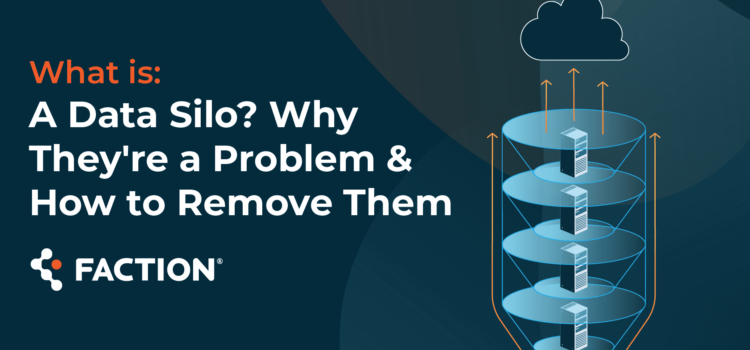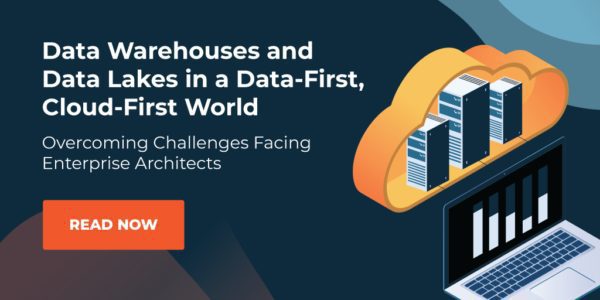What is a Data Silo? Why They’re a Problem & How to Remove Them


What Is a Data Silo?
A data silo is when data is stored in different places or isolated from parts of the organization. For example, the marketing team and the sales team use different data warehouses. Since different departments have access to different systems or data sources, it can cause problems with alignment. In some cases, this disparate information can cause different teams within an organization to analyze data and come to a different conclusion because they aren’t seeing the full picture.
What Causes Data Silos?
Data silos within a company typically occur for one of four reasons.
- Organizational structure
- Company culture
- Technology that is not integrated
- Growth and/or data sprawl over time
Organizational Structure Creates Data Silos
As a company evolves, they often add new technology, SaaS services, or a separate data warehouse. Different functional units may have their own database or pull from different data sources. It becomes common to have multiple information systems within the same business that are not tied together in a meaningful way.
Company Culture
Some companies have developed a hierarchy and layers of management within their business that simply do not support the sharing of information. Internal competition, especially in large organizations, can prevent embedding data throughout an organization and lead to organizational silos.
Often, information isn’t shared because one of the teams in the organization doesn’t understand how other teams would benefit from the data. As such, data silos emerge, even if unintentionally.
Technology That Is Not Integrated
In some organizations, different work units will use different technology, which can make it difficult to share common information. For example, the sales team might be using Salesforce, Microsoft Dynamics 365, or HubSpot as their sales hub, but the marketing team or finance team doesn’t have access to the application or its information.
The average company is now using 80 different SaaS applications. It’s easy for these to become data silos without a plan for data integration.
Growth Over Time
Over time, organizations grow. With more employees, branches, and offices, it can create structural divisions. As more people join the organization, they may bring different approaches to data. While this can lead to new insights, it can also have a negative impact if there isn’t a strong data management plan in place. The larger the organization, the more likely it is to create data silos, whether it happens organically or whether teams want to hold on to information to maintain control.
How Data Silos Hurt Your Organization
Siloed data can have a negative impact throughout an entire enterprise. An information silo limits the view of the data for the team. When you have multiple organizational silos, it can lead to significant problems in how people and teams work efficiently toward the common goal.
Limited Access = Limited Views of Data Sets
For example, when a sales team member uses an Excel spreadsheet to keep track of sales prospects rather than a cloud customer relationship management (CRM) app or shared resource, there can be conflicts within the sales department over claiming accounts. The marketing department might not have access to this information, which they could use to develop complementary marketing campaigns. The finance department may have difficulty accurately forecasting data.
Even if the group information is captured within a business tool that acts as a central repository, if the data is not available across the entire enterprise, alignment problems will arise.
This can limit business growth, new revenue, and the money that salespeople can earn.
Data Integrity Is Compromised
When data is siloed in different data sets or a different data warehouse, it’s easy for data to get out of sync and create inconsistencies. Without active data management, people might be working with different versions of spreadsheets or fail to access the most recent data.
Using out-of-date information can negatively impact the business. When executives and staff cannot rely on the data they have, it can cause serious problems. This lack of transparency in business intelligence can hurt the rest of the company and lead people to question the data, come to conflicting insights, and make poor business decisions.
Data integrity is crucial.
Data Silos Are Inefficient
Big data requires significant storage capabilities. Besides relevant data not being available to the employees who need it, the same data may be duplicated in different databases. Some employees may store it locally or save it in multiple places. Every time this happens, it takes up more resources to store data. It can quickly lead to conflicting information when using a different business tool, depending on which data warehouse stores the information.
Duplicative data takes up unnecessary resources, which is a problem since storage costs money. If your storage is on-site, it creates an ever-increasing amount of hardware or virtual machines to purchase and manage processes. If you are buying cloud storage, every time you add capacity, you are increasing your costs.
How to Eliminate Data Silos
If you were designing your enterprise from scratch, your business leaders would have a much easier time incorporating different ways to collect data into streamlined processes. However, a legacy enterprise or business may have a significant challenge in breaking down information silos today.
Here’s the good news. It’s the right time to eliminate these data silos. Here are the steps you need to take — as a group — to break down silos.
Address the Cultural Issues
It starts with getting everyone across your organization on the same page. Everyone’s priorities must be aligned to get successfully get rid of silos. Teams need to understand how data silos hurt productivity and business growth and see the value in creating a single source of truth.
Cultural issues may be the biggest obstacle you face when eliminating data silos. These barriers may be long-standing — especially in separate departments. While it may be easy for team members to understand the need at a high level, it may lead to confusion for the rest of the organization about how to address the important factors that it takes for full data integration to occur.
Solving the cultural challenges won’t work if the sales department, marketing team, or other groups of employee units aren’t fully committed to the change. It takes executive leadership at the highest levels and the budget to back it up to have a better chance for success. Commitment from the top is the only way to build a culture of collaboration.
Create a Centralized Data Repository
The best way to eliminate data silos is by creating a centralized data repository. It’s the right time to deploy a data warehouse or data lake that encompasses all the data your organization collects. Whether you do this on-prem or in the cloud, data from disparate sources must be consolidated and available across an organization for quick access to the valuable information they need.
Integrate Data
Business intelligence works best when data is embedded throughout an organization. The right information at the right time is crucial for analysis and to make smarter business decisions. However, if data is integrated into your organizational structure, such data will not be available.
Data integration can be accomplished in several different ways.
- Scripting
- On-premises ETL
- Cloud-based ETL
Scripting
IT teams can write scripts to extract data from various sources and move it to a central repository. SQL, Python, or other scripting languages are used to move data out of silos and into a data warehouse or data lake. This can be time-consuming and meticulous work as individual scripts must be written, and any changes in data sources will require updating scripts.
On-prem ETL
Using Extract, Transform, Load (ETL) tools can automate the data migration into the data warehouse. ETL tools can extract data from various sources and transform it into a common format for storage and retrieval. Then, it is automatically loaded into the data warehouse within a company’s on-premises data center.
Cloud-based ETL
A cloud-based ETL solution works the same way by extracting, transforming, and loading data into a cloud data warehouse using the cloud provider’s infrastructure.
Enhance Your Data Governance
When all of your data is stored in one place, you can enhance your data governance by creating policies governing access. Most companies use the premise of least access by limiting access to only those users who are authorized to access certain data while maintaining access for any employee who needs it.
Data governance is essential for companies using bid data to ensure the quality and security of the data. It provides a consistent application of the collection of information, storage, access, security, and compliance as data flows through an organization. Whether the sales team, marketing team, or any other group within the enterprise is working with data, they will all fall under the data governance framework to avoid creating a new business silo.
Choose Applications Wisely
When creating or adding a new application, ensure it has native integration with your data warehouse capabilities. Many CRM and marketing tools, accounting software, e-commerce platforms, and popular business tools will have native integration.
Conclusion
Breaking down data silos takes time and commitment. When you do it, however, you will see the benefits immediately. When high-quality, accurate, and timely data is available throughout an organization, productivity will increase, analysis will be more consistent, and you will make better business decisions.
With Faction, you can break down data silos and get faster time to insights using a cloud data warehouse deployed on Faction Cloud Control Volumes, the industry’s leading multi-cloud data service platform. An added advantage is that your data is connected to all hyperscale cloud providers at the same time, allowing you to consolidate cloud and on-premises data into the platform. Once consolidated, you can use apps hosted in the cloud or on-premises to analyze your data from a single data source.
Read more about how to overcome challenges facing Enterprise Architects and download our new whitepaper.
